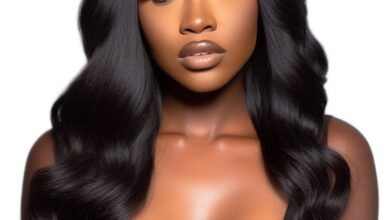The Symbolism of Egyptian Clothing
Egyptian clothing was more than just a practical necessity; it was a powerful symbol of social hierarchy and spiritual beliefs. Ancient Egyptians believed that clothing could protect the wearer both physically and spiritually. Linen, the primary fabric used in Egyptian garments, was made from flax and is considered a symbol of purity due to its lightness and ability to remain cool in Egypt’s scorching climate. For the wealthy, including royalty, linen was of the finest quality, bleached to an almost pure white.
Colours, patterns, and accessories carried deep symbolic meaning as well. Colours were associated with specific gods, natural elements, and concepts of life and death. Gold, for example, was considered the flesh of the gods, symbolizing divinity and eternity, while green represented fertility and rebirth, often associated with Osiris, the god of the afterlife. Wearing certain colours or symbols was believed to provide protection or bring good fortune.
Pharaohs The Ultimate in Egyptian Royalty Costumes
Pharaohs were not just rulers; they were seen as living gods, and their clothing reflected their divine status. A pharaoh’s costume typically included elaborate elements that set them apart from the rest of society. The most recognizable feature of a pharaoh’s outfit is the nemes—the striped headcloth often depicted on statues and murals of famous rulers like King Tutankhamun. This headpiece was worn to signify the pharaoh’s authority and was often paired with a false beard, another symbol of power and godlike status.
Pharaoh costumes also included intricately decorated collars known as usekh collars, made from gold, precious stones, and glass beads, forming a wide, ornate neckpiece that would cover the shoulders. These collars were not only symbols of wealth but also served as protective amulets, as many believed that wearing gold brought them closer to the gods.
A pharaoh’s skirt, or shandy, was typically made of fine linen, pleated, and sometimes accompanied by an apron. The skirt was worn around the waist and secured with a belt, while the legs were left bare to combat the heat of the desert climate. Sandals made from leather or papyrus completed the outfit, though pharaohs were often depicted barefoot, especially in ceremonial contexts.
Queens and Noblewomen: Elegance and Power
Like the pharaohs, Egyptian costumes queens and noblewomen wore clothing that signified their high status and divine connection. The most famous example of an Egyptian queen’s attire comes from Cleopatra, who, though not of Egyptian descent, adopted the clothing and customs of the land to align herself with the Egyptian gods and goddesses.
The kalasiris, a form-fitting linen dress, was the standard garment for women of noble birth. This dress often featured straps that left the shoulders bare or were sometimes worn with a cape-like garment for added elegance. The length and quality of the fabric reflected the wearer’s wealth, with the highest-ranking women wearing finely woven, sheer linen.
Jewellery played a significant role in a queen’s costume. Gold, lapis lazuli, carnelian, and turquoise were used to create stunning bracelets, necklaces, and earrings. Armlets, anklets, and elaborate headdresses adorned with gold and feathers were also worn, signifying both the woman’s beauty and her divine status. The uraeus, a stylized cobra worn on a headdress, symbolized sovereignty, protection, and the goddess Wadjet, further cementing the connection between royal women and the divine.
Makeup was another key component of an Egyptian queen’s appearance. Kohl, a black cosmetic made from galena, was applied around the eyes to create the iconic almond-shaped look. This not only enhanced the wearer’s beauty but was also believed to protect against the evil eye and the harsh sun.
Priests and Priestesses: Sacred Attire for Religious Rituals
The religious class in Ancient Egypt, particularly priests and priestesses, also wore distinctive costumes. Priests had to maintain a high level of purity to perform their duties, which included tending to the gods in temples and performing daily rituals. As a result, their clothing was typically simple but made from high-quality linen, which was believed to be the purest fabric.
Priests often wore leather or papyrus sandals, though they were usually barefoot during temple rituals. A shaved head was common among priests to signify cleanliness, and they often adorned themselves with small amulets or jewellery that had religious significance, such as the ankh, a symbol of eternal life, or the Djed pillar, representing stability.
Some high-ranking priests, especially those serving in temples dedicated to powerful gods like Ra or Amun, wore more elaborate garments, including leopard-skin cloaks. These cloaks were believed to imbue the wearer with the ferocity and power of the animal, making them suitable for rituals in which the priest sought to communicate with the gods.
Everyday Egyptian Costumes for Commoners
While the costumes of pharaohs, queens, and priests were elaborate and full of symbolic meaning, everyday Egyptians wore much simpler clothing. Men typically wore a basic loincloth or shandy, similar to that of the pharaoh but made from coarser, less expensive linen. Women wore longer dresses or skirts, which were looser and more practical for daily life.
Although commoners did not have access to the fine jewellery and ornate accessories worn by the elite, they still used simple beads, shells, and coloured stones to make their jewellery. Everyday Egyptian often went barefoot, especially when working in the fields, though sandals made from woven reeds were worn when necessary.
Egyptian Accessories: Adding the Final Touches
No Egyptian costume would be complete without its accessories. Jewelry was an essential part of Egyptian fashion for people of all social classes. Gold and semi-precious stones were commonly used among the upper class, while commoners often made their jewellery from painted clay or bone.
Egyptians also believed in the protective power of amulets, which were worn to bring good fortune, health, and protection from evil spirits. The most well-known amulet is the Eye of Horus, a symbol of protection, royal power, and good health. Other amulets, such as the scarab beetle, symbolized rebirth and were commonly worn as necklaces, bracelets, or placed within clothing.
Modern Interpretations of Egyptian Costumes
Today, Egyptian costumes are a popular choice for themed parties, Halloween, and theatrical performances. Modern versions of these costumes often focus on the most iconic elements of ancient Egyptian fashion, such as the pharaoh’s headpiece, Cleopatra’s glamorous attire, and the detailed jewellery worn by royalty. These costumes blend historical accuracy with modern materials, creating wearable outfits that capture the essence of Ancient Egypt’s regal and mysterious culture.
When choosing an Egyptian costume, look for key elements such as bold accessories, flowing linen garments, and gold accents that symbolize the opulence and mystique of Ancient Egypt. Whether you’re dressing as a pharaoh, queen, or everyday Egyptian, the rich history and style of Egyptian fashion ensure that your costume will be both eye-catching and deeply symbolic.
Conclusion
Egyptian costumes, with their combination of luxury, symbolism, and history, continue to captivate and inspire people today. Whether for educational purposes, entertainment, or simply to celebrate one of the most fascinating ancient cultures, dressing in an Egyptian costume allows you to embody the majesty and mystery of a civilization that has influenced art, architecture, and fashion for thousands of years.


